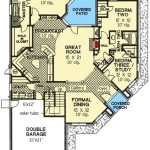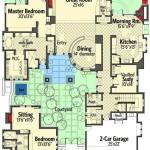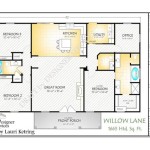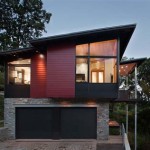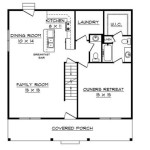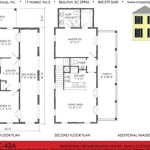Wren house plans are blueprints or instructions for constructing houses specifically designed to attract and provide a nesting space for wrens, small songbirds known for their melodious songs and insect-eating habits. These plans often include detailed diagrams, measurements, and material requirements for building a suitable wren house that meets the particular needs of these birds.
The purpose of a wren house is to provide wrens with a safe and suitable nesting site, especially in areas where natural nesting cavities are scarce or unavailable. Wren houses are typically placed in gardens, parks, or other outdoor areas frequented by these birds. By providing a welcoming nesting environment, wren house plans contribute to the conservation and well-being of wren populations.
In the following sections, we will explore the key aspects of wren house plans, including design considerations, construction materials, and placement guidelines. We will also provide some examples of popular wren house plans and offer tips for building and maintaining these important bird habitats.
When designing and constructing a wren house, there are several important points to consider:
- Entrance hole size: 1-1/8 to 1-1/4 inches
- Floor space: 4 x 4 inches
- Height: 6-8 inches
- Ventilation: Holes near the top for air circulation
- Drainage: Holes in the floor for water drainage
- Predator protection: Baffle or overhang above the entrance hole
- Durability: Use weather-resistant materials
- Cleanability: Removable roof or side for easy cleaning
These factors contribute to the overall functionality and effectiveness of a wren house in attracting and supporting nesting wrens.
Entrance hole size: 1-1/8 to 1-1/4 inches
The entrance hole size of a wren house is a critical factor that directly influences the species of wren that will utilize the structure. Wrens have specific preferences when it comes to the size of the entrance hole, and providing an appropriate opening is essential for attracting the desired birds.
The optimal entrance hole size for a wren house ranges from 1-1/8 to 1-1/4 inches in diameter. This size is suitable for most wren species, including house wrens, Carolina wrens, and Bewick’s wrens. A hole that is too small may deter wrens from using the house, while a hole that is too large could allow larger birds or predators to enter.
In addition to the diameter, the shape of the entrance hole is also important. Wrens prefer an entrance hole that is round or slightly oval. Avoid using triangular or square holes, as these can be more difficult for wrens to enter and exit.
The placement of the entrance hole is another important consideration. The hole should be positioned near the top of the wren house, approximately 6-8 inches above the floor. This placement provides wrens with a clear view of the surroundings and helps to prevent predators from reaching the nest.
By carefully considering the entrance hole size, shape, and placement, you can create a wren house that is specifically tailored to attract and support nesting wrens.
Floor space: 4 x 4 inches
The floor space of a wren house is another important factor that influences its suitability for nesting wrens. The floor should provide enough space for the wrens to comfortably build their nest and raise their young. A floor that is too small may be cramped and uncomfortable, while a floor that is too large may make it difficult for the wrens to keep their nest warm and protected.
The optimal floor space for a wren house is 4 x 4 inches. This size provides wrens with enough space to build a comfortable nest and move around easily. The floor should be flat and level, without any sharp edges or protrusions that could injure the birds or their young.
The floor of the wren house should also be made of a material that is moisture-resistant and easy to clean. Wood is a common choice for wren house floors, as it is durable and relatively easy to work with. However, wood floors should be treated with a sealant to protect them from moisture damage.
Other materials that can be used for wren house floors include plastic and metal. Plastic floors are lightweight and easy to clean, but they can become brittle in cold weather. Metal floors are durable and weather-resistant, but they can be more difficult to work with and may conduct heat, which could make the nest too hot or too cold.
By providing a floor that is the appropriate size and made of a suitable material, you can create a wren house that is comfortable and safe for nesting wrens.
Height: 6-8 inches
The height of a wren house is another important factor that influences its suitability for nesting wrens. The height of the house should provide enough space for the wrens to build their nest and raise their young without feeling cramped or crowded. A house that is too short may not provide enough space for the nest, while a house that is too tall may make it difficult for the wrens to reach the nest entrance.
The optimal height for a wren house is 6-8 inches. This height provides wrens with enough space to build a comfortable nest and move around easily. The height should be measured from the floor of the house to the top of the roof.
The height of the wren house should also be considered in relation to the size of the entrance hole. The entrance hole should be positioned approximately 6-8 inches above the floor of the house. This placement provides wrens with a clear view of the surroundings and helps to prevent predators from reaching the nest.
By providing a house that is the appropriate height and has an entrance hole that is correctly positioned, you can create a wren house that is comfortable and safe for nesting wrens.
In addition to the height of the house, the shape of the house can also influence its suitability for nesting wrens. Wrens prefer houses that are rectangular or square in shape. Avoid using houses that are triangular or round, as these shapes can be more difficult for wrens to build their nests in.
Ventilation: Holes near the top for air circulation
Proper ventilation is essential for the health and well-being of nesting wrens. A well-ventilated wren house allows for the circulation of fresh air, which helps to prevent the buildup of moisture and mold. Moisture and mold can damage the nest and make it unhealthy for the birds. In addition, proper ventilation helps to regulate the temperature inside the house, preventing it from becoming too hot or too cold.
To ensure proper ventilation, wren house plans should include holes near the top of the house. These holes should be approximately 1/2 inch in diameter and should be placed on opposite sides of the house. The holes should be positioned near the top of the house to allow for the escape of warm, moist air.
Here are some additional tips for ensuring proper ventilation in a wren house:
- Avoid using solid materials for the floor and roof of the house. Solid materials can block airflow and prevent the circulation of fresh air.
- If possible, use a material that is naturally breathable, such as wood. Breathable materials allow for the passage of air, which helps to keep the house well-ventilated.
- Clean the wren house regularly to remove any debris or nesting material that could block the ventilation holes. A clean house will allow for better airflow and will help to keep the birds healthy.
By following these tips, you can create a well-ventilated wren house that will provide a healthy and comfortable environment for nesting wrens.
Drainage: Holes in the floor for water drainage
Proper drainage is essential for the health and well-being of nesting wrens. A well-drained wren house prevents the buildup of water, which can damage the nest and make it unhealthy for the birds. In addition, proper drainage helps to regulate the temperature inside the house, preventing it from becoming too hot or too cold.
To ensure proper drainage, wren house plans should include holes in the floor of the house. These holes should be approximately 1/4 inch in diameter and should be placed in the corners of the floor. The holes should be positioned near the bottom of the house to allow for the drainage of water.
Here are some additional tips for ensuring proper drainage in a wren house:
- Avoid using solid materials for the floor of the house. Solid materials can prevent the drainage of water and can lead to the buildup of moisture and mold.
- If possible, use a material that is naturally water-resistant, such as cedar or redwood. Water-resistant materials will help to prevent the floor of the house from rotting and will allow for better drainage.
- Clean the wren house regularly to remove any debris or nesting material that could block the drainage holes. A clean house will allow for better drainage and will help to keep the birds healthy.
By following these tips, you can create a well-drained wren house that will provide a healthy and comfortable environment for nesting wrens.
In addition to the drainage holes in the floor, some wren house plans also include a drainage channel. A drainage channel is a smallthat runs along the bottom of the house and directs water away from the nest. Drainage channels can be helpful in areas that receive a lot of rainfall.
Predator protection: Baffle or overhang above the entrance hole
Wrens are small birds that are vulnerable to predators such as cats, snakes, and squirrels. To protect wrens from predators, it is important to include a baffle or overhang above the entrance hole of the wren house.
- Baffle
A baffle is a flat piece of material that is placed above the entrance hole of the wren house. Baffles can be made of wood, plastic, or metal. They should be at least 2 inches wide and 4 inches long. Baffles help to prevent predators from reaching the entrance hole and entering the wren house.
- Overhang
An overhang is a roof-like structure that extends over the entrance hole of the wren house. Overhangs can be made of wood, plastic, or metal. They should be at least 2 inches wide and 4 inches long. Overhangs help to prevent predators from reaching the entrance hole and entering the wren house.
In addition to a baffle or overhang, you can also take other steps to protect wrens from predators, such as:
- Place the wren house in a safe location. Avoid placing the wren house in areas that are frequented by predators, such as near bird feeders or in open areas.
- Monitor the wren house regularly. Keep an eye on the wren house for any signs of predators. If you see any predators near the wren house, take steps to scare them away.
By taking these steps, you can help to protect wrens from predators and provide them with a safe place to nest and raise their young.
Durability: Use weather-resistant materials
Wren houses should be constructed using durable materials that can withstand the elements. Weather-resistant materials will help to protect the house from rot, decay, and damage caused by moisture, sunlight, and extreme temperatures.
Some of the most common weather-resistant materials used for wren houses include:
- Cedar
Cedar is a naturally rot-resistant wood that is ideal for use in outdoor applications. Cedar is also resistant to insects and decay, making it a durable choice for wren houses.
- Redwood
Redwood is another naturally rot-resistant wood that is well-suited for use in wren houses. Redwood is also resistant to termites and other pests, making it a durable choice for outdoor use.
- Plastic
Plastic is a durable and weather-resistant material that is often used for wren houses. Plastic is lightweight and easy to work with, making it a good choice for do-it-yourself projects.
- Metal
Metal is a durable and weather-resistant material that is sometimes used for wren houses. Metal is strong and can withstand the elements, but it can also be more expensive than other materials.
When choosing a weather-resistant material for your wren house, it is important to consider the climate in your area. If you live in an area with extreme temperatures or high humidity, you will need to choose a material that is specifically designed to withstand those conditions.
Cleanability: Removable roof or side for easy cleaning
Wren houses should be easy to clean to prevent the buildup of mites, parasites, and other pests that can harm the birds. A removable roof or side will allow you to access the inside of the house for cleaning.
- Removable roof
A removable roof is the most common type of cleanable wren house. The roof is typically held in place by screws or nails, and it can be easily removed for cleaning. Removable roofs are a good choice for wren houses that are placed in high locations or that are difficult to reach.
- Removable side
A removable side is another option for a cleanable wren house. The side is typically held in place by screws or nails, and it can be easily removed for cleaning. Removable sides are a good choice for wren houses that are placed in low locations or that are easy to reach.
- Hinged door
A hinged door is a less common option for a cleanable wren house. The door is typically attached to the house with hinges, and it can be swung open for cleaning. Hinged doors are a good choice for wren houses that are placed in high locations or that are difficult to reach.
- Clean-out hole
A clean-out hole is a small hole that is located at the bottom of the wren house. The hole is typically covered with a plug or a door, and it can be opened for cleaning. Clean-out holes are a good choice for wren houses that are placed in low locations or that are easy to reach.
When choosing a cleanable wren house, it is important to consider the location of the house and the ease of access for cleaning. You should also consider the type of cleaning that you will need to do. If you live in an area with a lot of pests, you may need to clean the wren house more frequently. A removable roof or side will make it easier to clean the house thoroughly.










Related Posts

